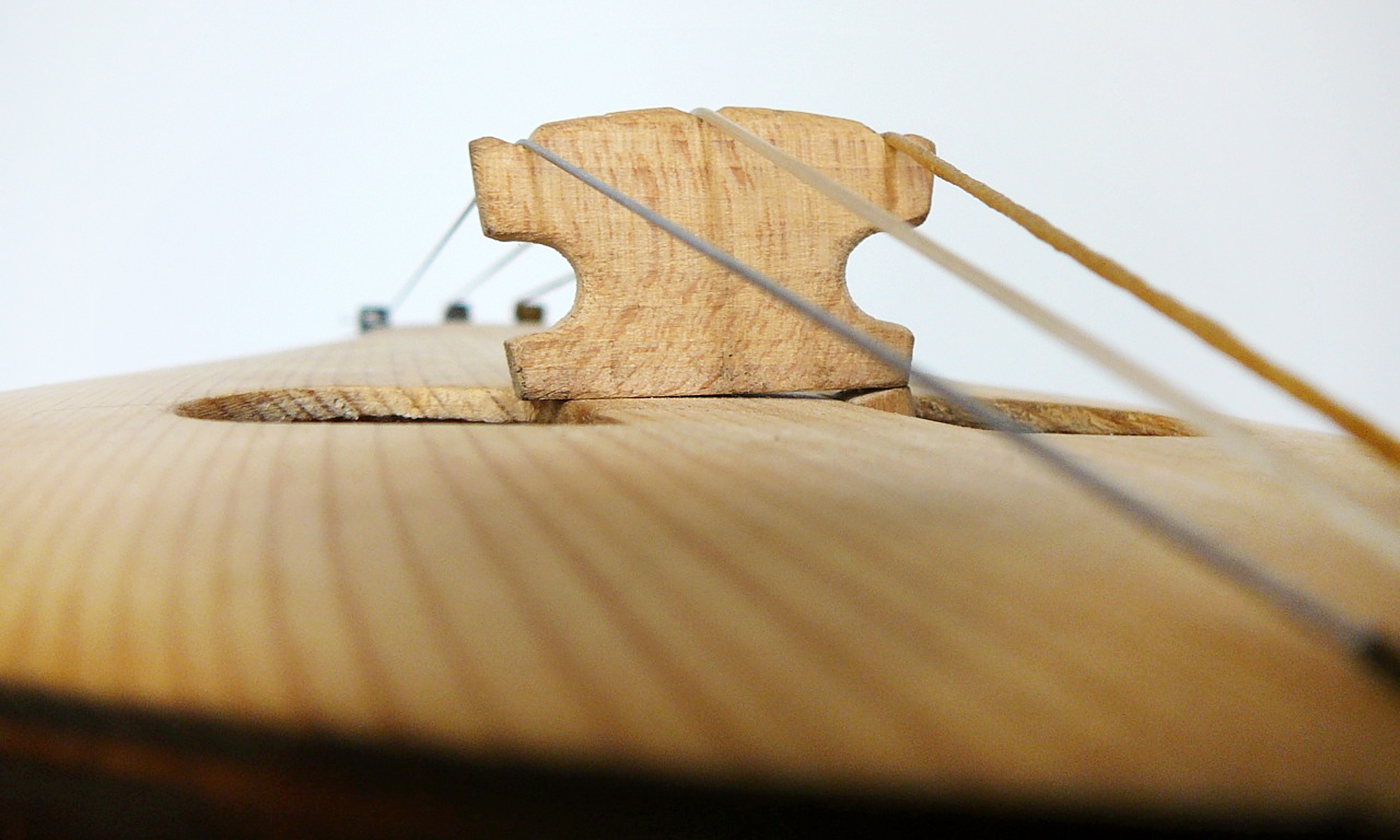If I thought six pieces of new music in one concert was impressive, Garth Knox clearly felt himself up to the challenge by playing seven, albeit none of them premieres, in this ecat (Edinburgh Contemporary Arts Trust) concert. He faced, perhaps, a bigger challenge as one might not necessarily imagine the viola could sustain a whole concert, certainly I had my doubts. Such concerns were unfounded and Knox quickly erased them.
I’ve complained before about artists talking too much. Knox spoke before each piece, but it never seemed superfluous he shared a player’s insights of a kind that were not contained in the programme, comparing one piece to a bagpipe (where you cannot play two notes the same in a row, leading to the distinctive style in which they are played) or demonstrating nearly four part harmony in Bach prior to the final Berio piece.
The first piece was probably least to my taste. I had prolonged exposure to Gyorgy Kurtag at last year’s Aldeburgh Festival and didn’t really warm to him. Jelek suffered from many of the same problems. Certainly there were some interesting sounds now and again, but the series of fragments didn’t seem to hang together as a cohesive whole.
James Dillon’s Siorram, which translates from Gaelic as «in an enchanted sleep», was much better. Dreamy, impressionistic and misty, it was an interesting piece and one I’d like to hear again.
This was followed by Salvatore Sciarrino’s Three Notturni Brillanti (brilliant, as in bright, nocturnes). At times highly dextrous, to the point that several composer friends I spoke to in the interval expressed curiosity as to how it was written on the score, but played very well. The highlight of the first half, however, was Gyorgy Ligeti, who never fails to impress me, and his sonata. Sadly only the first and fourth movements were played. The piece was doubly interesting for its use of only the bottom C string of the instrument in the first movement, and while this might seem a limiting factor, it did not sound to be. I would dearly love to hear the rest of it.
The first piece after the interval was Roland Moser’s Poem / Anecdote. It is not given much elucidation by a full quote of the programme note:
(That’s not a mistake, the programme is intentionally blank at this point.) Moser took a poem and an anecdote and stripped them of all the words, leaving only the punctuation and lines indicating the space between. The only instruction being the that they be played in the style of a poem and an anecdote respectively. This Knox did the extent to which it was improvised or planned was unclear, though he did say that it’s different every time he plays it. Certainly, the style of the two pieces was very different: the poem romantic and slow; the anecdote witty and at times hurried (with the three bells Knox mentioned it contains coming through clearly).
The finale came in form of Luciano Berio’s Sequenza VI (the sixth in his series of compositions for solo instruments in the sixties). Apparently something of a challenge to play, Berio wanted four part harmony, which, obviously, the way the strings are placed, and the nature of the flat bow, is impossible on the viola in the strictest sense. The only way round this is to play very loud and very fast, creating a wall of sound. In a manner reminiscent of that Aldeburgh concert, six music stands were arrayed across the stage, and Knox traversed them and the music impressively.
He was well received and gave us a lovely Henze miniature as an encore.
However, neither the finale, nor the encore, nor the Ligeti was the evening’s highlight. This came from Knox’s own Viola Spaces, essentially a series of etudes, they were originally devised as teaching exercises. The first Nine Fingers was so called because it is all pizzicato and all bar the left thumb are used. He showcased a glorious range of colour and texture that one seldom hears from the instrument, at times it was more reminiscent of a lute. This was followed by Ghosts, played entirely on the strings over the fingerboard (the outer strings producing no more than a hiss). It wasn’t quite successful, and perhaps not quite as spooky as need be for the title, but nice none the less. Then came Up, down, sideways, round, an exercise in bowing techniques, such as bouncing it on the strings, sliding it up and down lengthways, moving it in circles and using the ‘wrong’ sound of the bow. It was quite wonderful.
Throughout, Knox’s playing was of the highest standards technically and he performed with a nicely understated charisma. It was an enjoyable evening and makes me question why I haven’t got to any of ecat’s concerts in the past, certainly I shall be doing so in the future. It is a great shame, however, that the hall wasn’t fuller, perhaps only seventy or so people attending. It’s a pity Edinburgh is often so cool to new music, given there are so many wonders to hear.
TAM POLLARD
source : Where’s Runnicles
